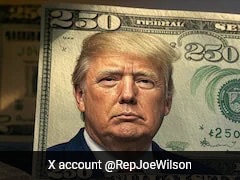Your cart is currently empty!
The Great President Trump $250 Bill: A Hypothetical Symbol of Legacy and Economics


The idea of a $250 bill featuring former President Donald Trump is both imaginative and symbolic. While such a denomination does not currently exist in the U.S. currency system, the concept invites discussion about leadership, economics, and how historical figures are represented through money.
Currently, U.S. paper currency includes denominations from $1 to $100, with larger bills like the $500, $1,000, and $10,000 notes discontinued decades ago. These high-value bills were originally designed for transactions between banks and the federal government—not for public circulation.
A Hypothetical $250 Bill: Symbolism and Meaning
The concept of placing Donald Trump on a $250 bill could be seen as more than just a design choice—it might represent a broader political and economic statement. Trump’s presidency was marked by strong opinions, major policy changes, and lasting influence on both domestic and global affairs.
To some, such an image could symbolize economic strength, business-driven policy, and nationalism. To others, it might represent controversy, debate, and the polarized nature of modern American politics.
This makes the idea of a Trump $250 bill less about money itself and more about the story it tells—a reflection of how deeply political figures can shape public discourse, identity, and even art.
How People Are Chosen for U.S. Currency
The process of selecting individuals to appear on American currency is carefully regulated by the U.S. Department of the Treasury and the Bureau of Engraving and Printing.
Traditionally, honorees are chosen based on their:
- Lasting contributions to American history or freedom
- Cultural or social influence that transcends their era
- Broad public respect and historical perspective
Notably, no living person has ever been featured on circulating U.S. currency. Figures such as George Washington, Abraham Lincoln, and Benjamin Franklin were all honored long after their lifetimes.
This tradition emphasizes historical legacy over current political relevance, ensuring that those depicted represent long-term contributions to the nation rather than temporary popularity.
The Political and Cultural Debate
The idea of placing Donald Trump—or any modern president—on new currency would certainly spark debate. Supporters might view it as a recognition of his presidency’s economic focus, tax reforms, and role in reshaping conservative politics. Critics, on the other hand, might see it as premature or politically divisive.
In this way, the notion of a $250 Trump bill symbolizes how money, politics, and national identity intersect. Currency is not just a financial tool—it’s a statement of what a country values and chooses to remember.
Beyond the Bill: The Power of National Symbols
Whether real or hypothetical, the concept of a new denomination featuring a modern figure invites reflection on how societies commemorate history and leadership.
If a $250 bill were ever to be introduced, featuring any leader, it would represent more than just economic convenience—it would signal a new chapter in how the U.S. defines and celebrates its identity.
Such discussions remind us that money, beyond its value, carries stories, ideals, and legacies that shape how future generations view the past.





